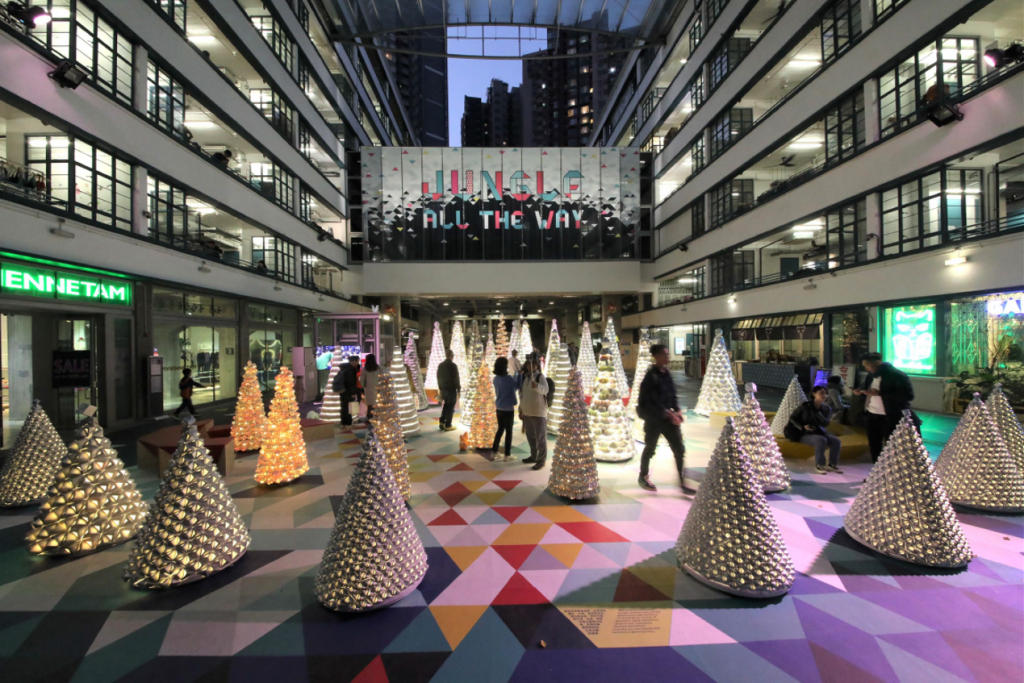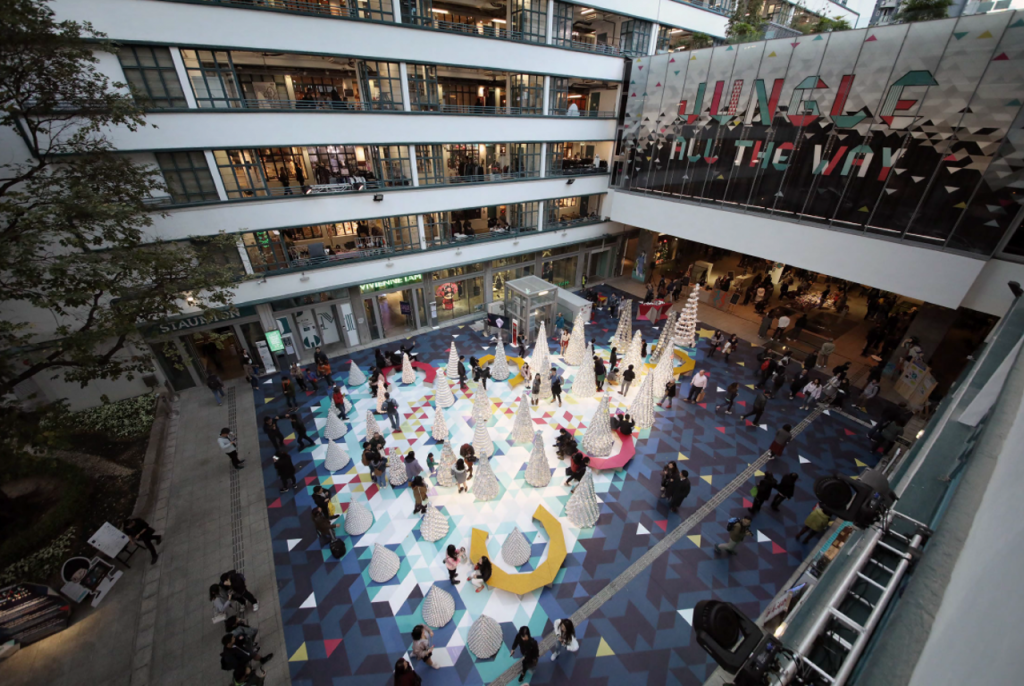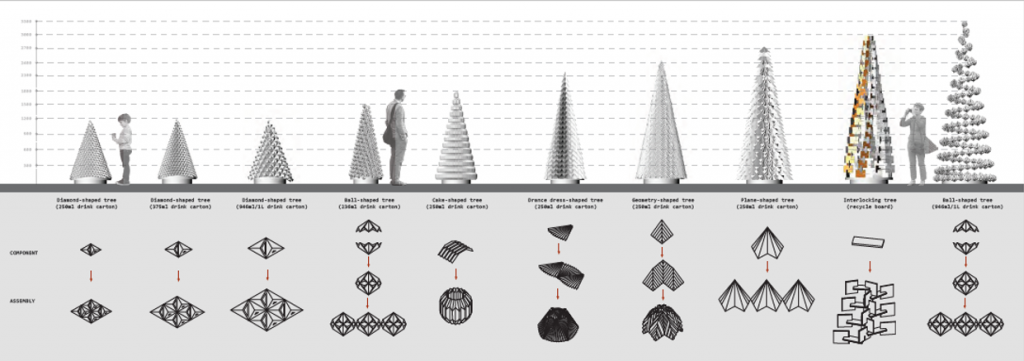
A forest of 36 Christmas trees of humanly engaging scale
How does one convey an environmental message as well as achieve place-making effect through a temporary Christmas installation?
AaaM Architects offered a radical and socially-engaging approach by creating 36 Christmas trees of humanly engaging scale out of 16,000 recycled paper drink cartons. The firm wanted to make use of the installations’ temporariness to plant lasting environmental awareness and initiate recycling habits in modern city living. The paper drink cartons were flattened, folded and reborn as a Christmas tree, re-conceptualising this symbol of modern festive consumerism as one of gathering, sharing and respect for the environment.

A temporary installation to plant lasting environmental awareness
The iconic silhouette of the Christmas tree was integrated with the spatiality of the ‘nursery forest’ in multiple dimensions. Eight different species of trees with varying heights were arranged in ascending order to optimise the exposure of each tree.

The Christmas tree silhouette was integrated with the spatiality of the ‘nursery forest’ in multiple dimensions
Viewed from the top, the 36 trees form one huge Christmas tree, engaging with visitors high up along the balconies of the revitalised heritage building site. An experiential path through the forest guides visitors through a series of key messages, recreational benches and public engagement stations.

Viewed from the top, the 36 trees form one huge Christmas tree
Inspired by the original folds and triangulation of the drink cartons, the essence was captured and developed into a series of patterns that integrated complexity with coherence to transform the waste material into aesthetically pleasing leaf modules. The nursery forest ground and glass façade backdrop were also composed of pixelated triangles with ascents and gradations, where functional zones, circulations and curatorial statements transited seamlessly in between. The inner aluminum side of the drink cartons was exposed to define the silvery façade of the tree installation.
Six different types of fold patterns were developed to respond to the various size and types of drink cartons recycled, to generate different aesthetic and lighting quality, as well as to suit the various level of public engagement needed.

Different types of fold patterns were developed to respond to the various size and types of drink cartons recycled
The 16,000 number of drink cartons were recycled by local primary schools over the past few years, and more than 1,600 primary students participated in the making of the trees. Public visitors were encouraged to participate in the recycling process and take part in the ‘growing’ of the Christmas trees. All materials will go back into recycling process after the exhibition, while the initiated environment awareness would continue its propagation. — Construction+ Online

 Malaysia
Malaysia Singapore
Singapore Indonesia
Indonesia Tiếng Việt
Tiếng Việt ประเทศไทย
ประเทศไทย









